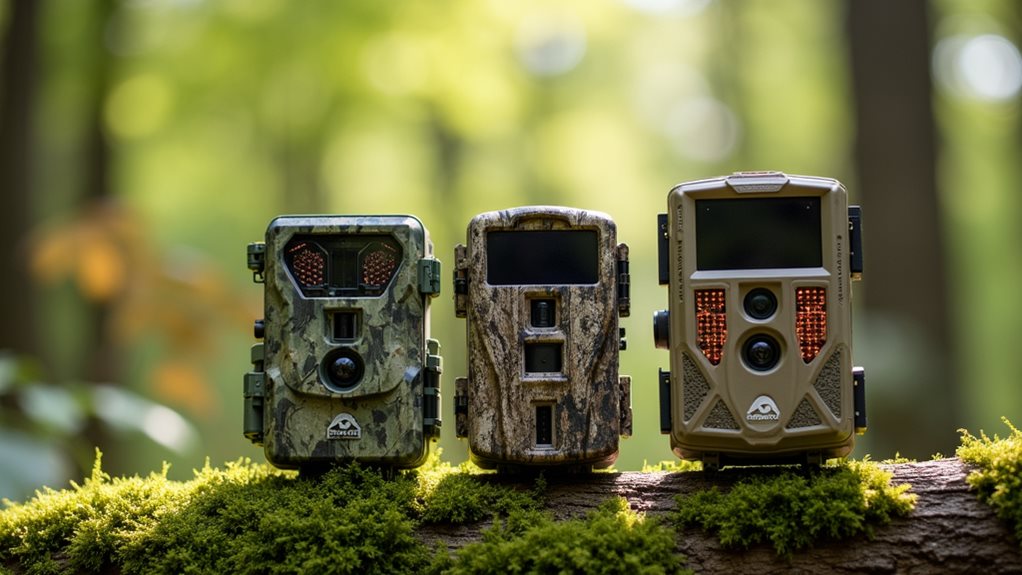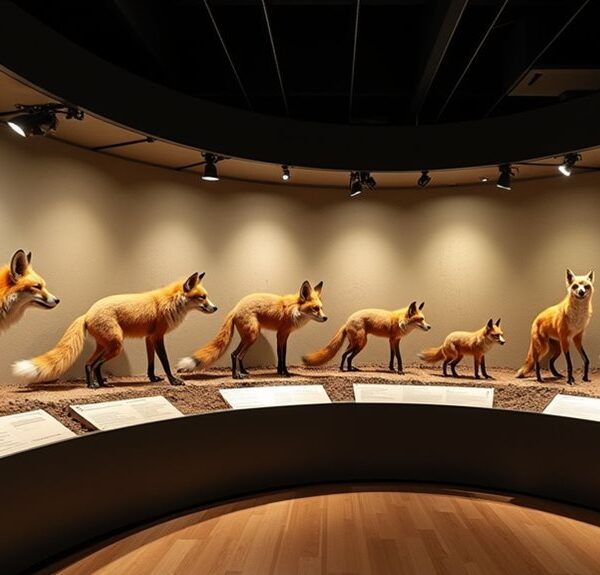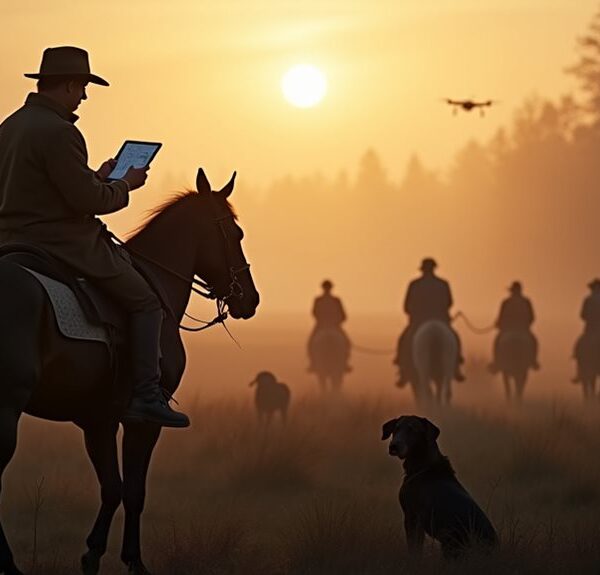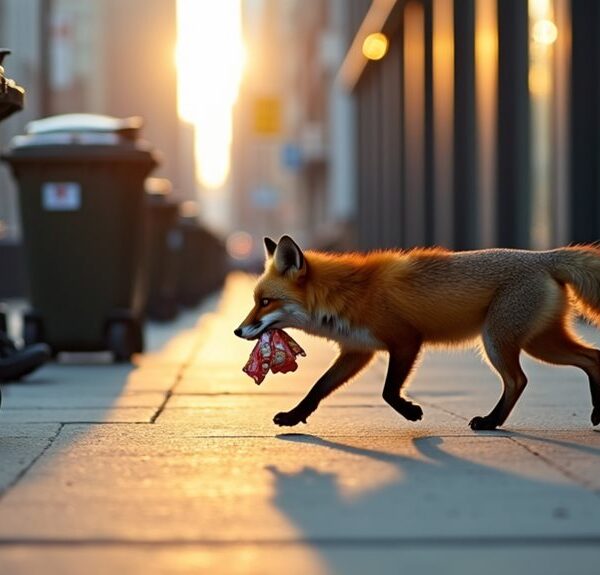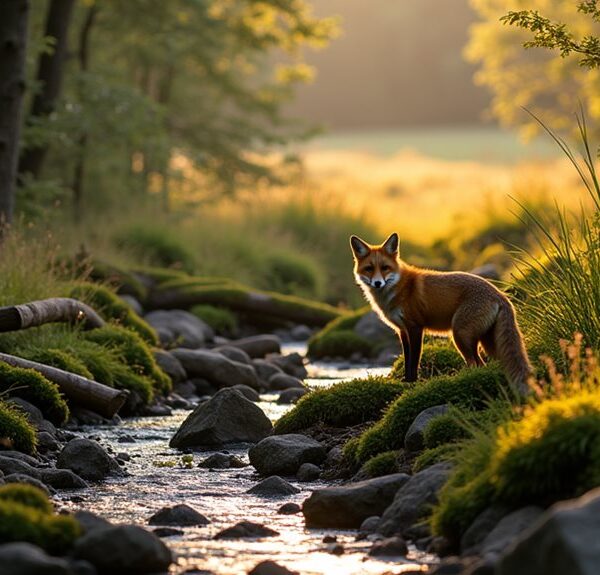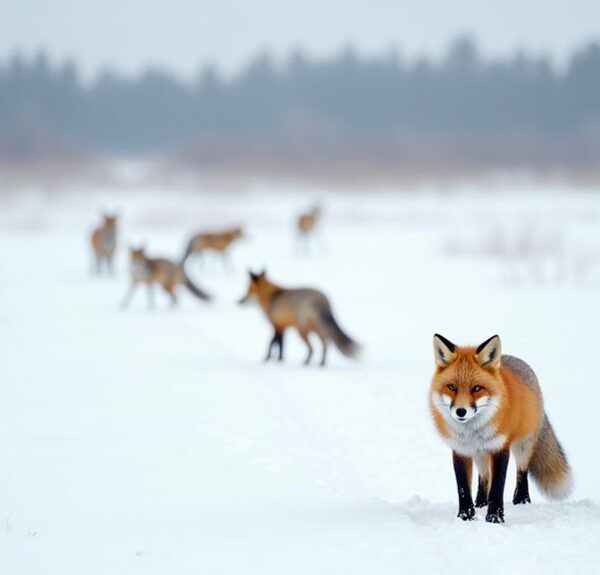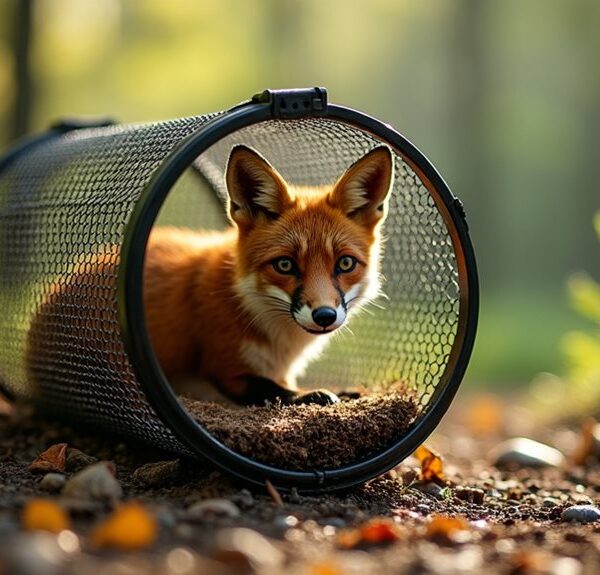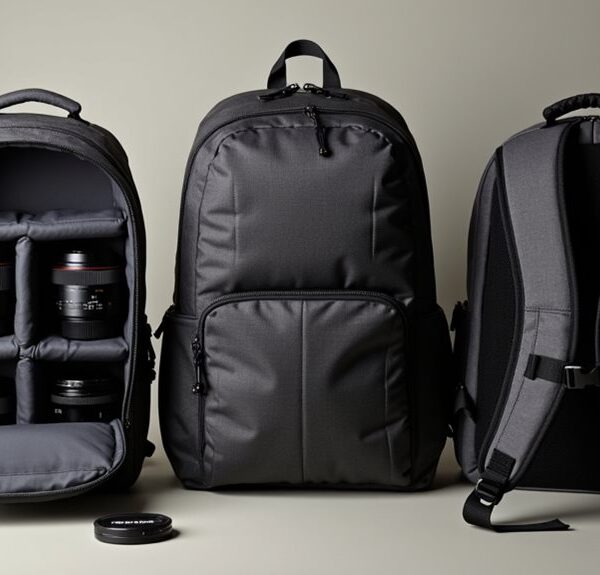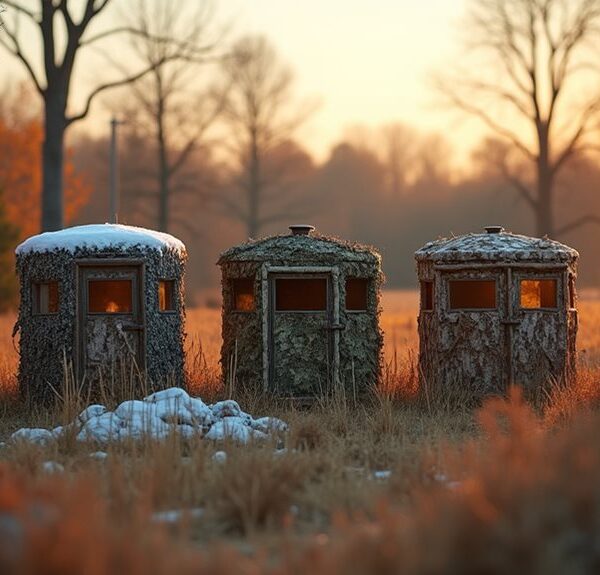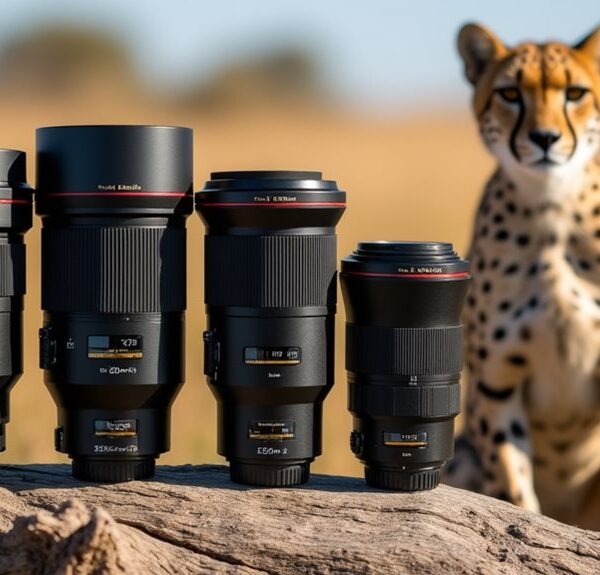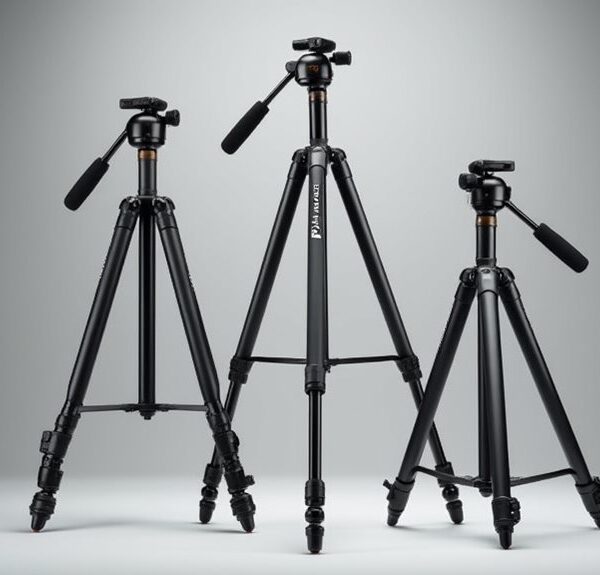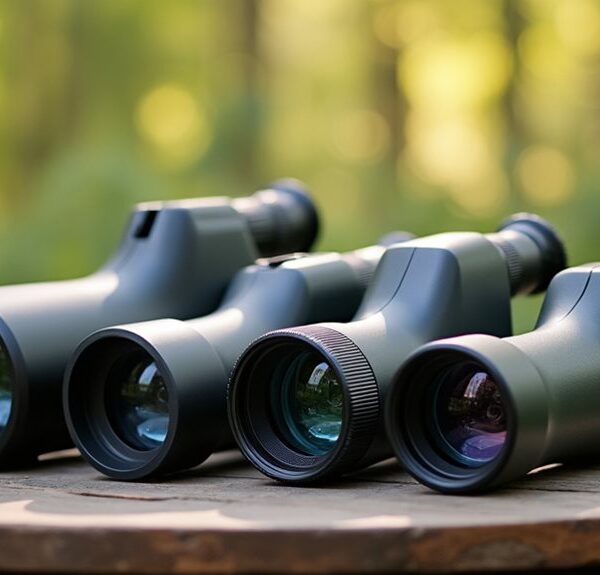The P70 Trail Camera offers impressive 64MP photos with lightning-fast 0.1s trigger speed and 100ft night vision. GardePro’s E6 model delivers 48MP quality with convenient WiFi connectivity for remote viewing. The A3S two-pack combines Sony Starvis sensors with triple PIR technology for exceptional detection. All three provide weatherproof construction and no-glow infrared for undisturbed wildlife monitoring. Your perfect trail camera choice depends on whether you prioritize image quality, remote access, or sensor sensitivity.
Contents
P70 Trail Camera 64MP Wildlife Hunting Camera with Night Vision
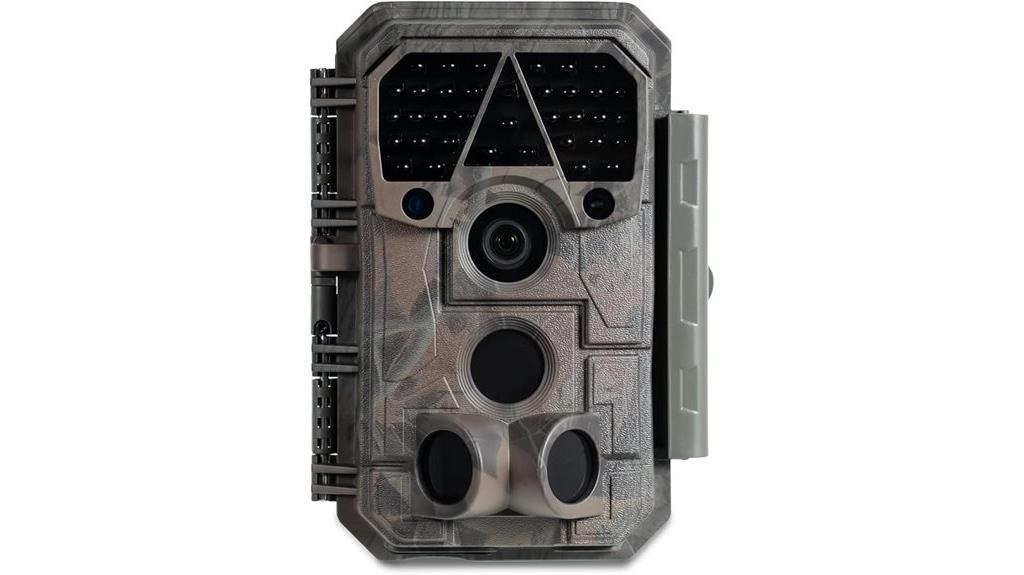
Nature enthusiasts and wildlife photographers, you’ll be amazed at what the Meidase P70 Trail Camera can capture in the wilderness. With stunning 64MP photos and 1296p HD video, you’re getting crystal-clear footage whether it’s high noon or midnight.
You won’t miss a thing thanks to the lightning-fast 0.1-second trigger speed and 100-foot night vision range. The camera’s invisible LEDs won’t spook animals, letting you capture their natural behaviors. It’s solar-ready for unlimited power, and the 2.4-inch display lets you review footage on the spot. Waterproof and rugged, it’ll brave the elements while you stay comfortable at home.
Best For: Nature enthusiasts, wildlife researchers, hunters, and property owners who need high-quality day and night surveillance with minimal intrusion on animal behavior.
Pros:
- Exceptional 64MP image quality with 1296p HD video and lightning-fast 0.1s trigger speed captures even the quickest wildlife moments
- Invisible 940nm LED night vision with 100ft range allows for undetected nighttime monitoring without disturbing animals
- Versatile power options with solar panel compatibility for extended field use and convenient 2.4-inch color display for immediate footage review
Cons:
- Essential accessories not included (SD card up to 512GB and 8 AA batteries must be purchased separately)
- At 1.08 pounds, it’s slightly heavier than some competing trail cameras
- Solar panel for unlimited power is an additional purchase (Meidase SP350 sold separately)
GardePro E6 Trail Camera WiFi 48MP for Wildlife Hunting
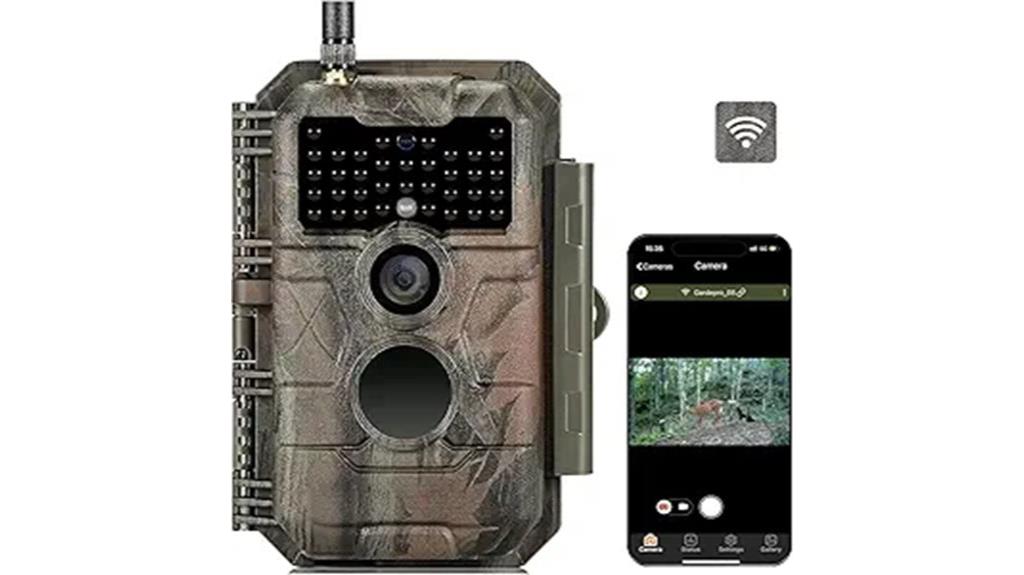
The GardePro E6 stands out as a tech-forward solution for serious hunters who don’t want to disturb wildlife. With its impressive 48MP image quality and 1296P HD video, you’ll capture crystal-clear evidence of that elusive buck you’ve been tracking all season.
What you’ll love most is the convenience—the GardePro Mobile app lets you preview footage without trudging back to your camera in the rain. Its improved 940nm no-glow infrared technology means animals won’t be spooked at night, while the 75-foot range guarantees you won’t miss those distant visitors. It’s waterproof too, so your investment stays protected through unexpected downpours and snowstorms.
Best For: Serious hunters and wildlife enthusiasts seeking a high-resolution trail camera with remote viewing capabilities that won’t disturb animals.
Pros:
- Impressive 48MP image quality and 1296P HD video with H.264 encoding for clear wildlife documentation
- Remote viewing and control via smartphone app eliminates the need to physically check the camera
- Advanced 940nm no-glow infrared technology with 75-foot range prevents spooking animals at night
Cons:
- Requires batteries which will need frequent replacement with heavy WiFi usage
- At 10.56 ounces, it’s slightly heavier than some comparable trail cameras
- App connectivity may be inconsistent in areas with poor cellular coverage despite the antenna
GardePro A3S Trail Camera 2 Pack (64MP, 1296p)
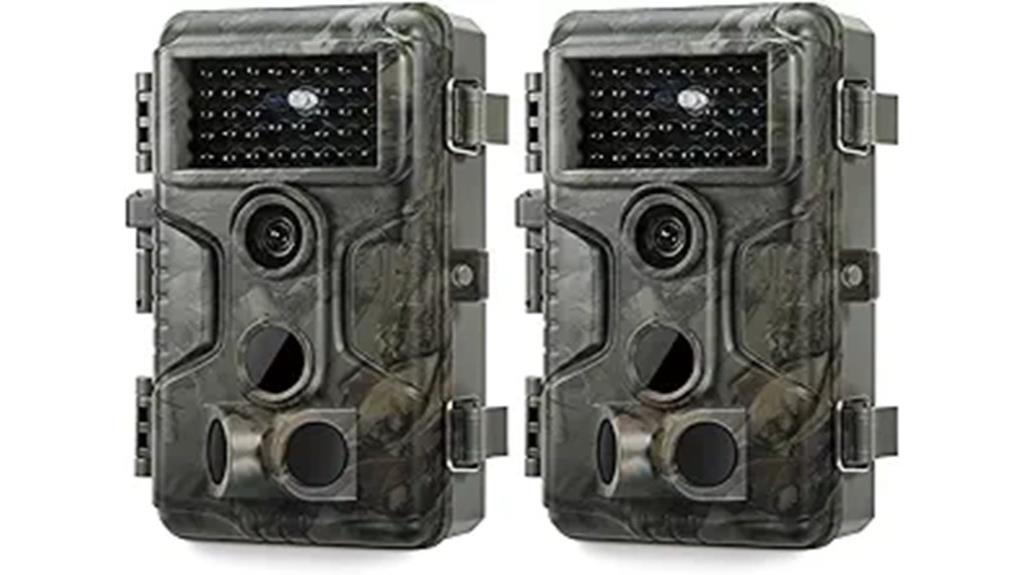
Wildlife enthusiasts and property managers will find the GardePro A3S Trail Camera 2 Pack an impressive surveillance solution that doesn’t compromise on quality. You’ll capture stunning 64MP images and crisp 1296p videos, thanks to the premium Sony Starvis sensor and optical lens.
What you’ll love is the lightning-fast 0.1s trigger speed with triple PIR sensors, guaranteeing you won’t miss a thing. The no-glow infrared LEDs provide clear night vision up to 100ft, while the 2.4″ color screen makes playback a breeze. Don’t worry about security—it’s password protected! Just remember to grab AA batteries and an SD card, as they’re not included in the package.
Best For: Wildlife photographers, hunters, and property owners seeking high-quality surveillance with exceptional night vision capabilities and ultra-fast motion detection.
Pros:
- Exceptional 64MP image quality and 1296p HD video with Sony Starvis sensor for professional-grade wildlife documentation
- Lightning-fast 0.1s trigger speed with triple PIR design ensures you capture even the quickest animals
- No-glow infrared technology provides clear night vision up to 100ft without disturbing wildlife
Cons:
- Batteries and SD card must be purchased separately, adding to the overall cost
- Requires 8 AA batteries which may need frequent replacement depending on usage
- 2.4″ screen may be small for reviewing detailed footage in the field
Factors to Consider When Choosing Trail Cameras
When you’re shopping for trail cameras, you’ll need to evaluate several key factors that can make or break your wildlife monitoring experience. You’ll want to compare resolution quality, trigger speed, and detection range to guarantee you capture those perfect wildlife moments without frustrating misses. Don’t forget to take into account practical aspects like battery life and storage capacity, which will determine how long your camera can operate independently in the field.
Resolution and Image Quality
Sharp, crisp images can make all the difference between identifying that trophy buck and wondering what just wandered past your camera. When you’re browsing trail cameras, pay close attention to megapixel (MP) ratings—a 64MP camera will deliver noticeably more detail than a 48MP model.
Don’t be fooled, though! Megapixels aren’t everything. Look for cameras with advanced sensors that perform well in low light and reduce those grainy, noisy images that’ll have you squinting at your screen. For video enthusiasts, aim for resolutions above standard HD—1296p will show you every twig snap and ear twitch.
The best cameras also pair high resolution with efficient encoding like H.264, so you won’t wait forever for downloads. And don’t forget night vision—no-glow infrared that reaches beyond 75 feet can be a game-changer!
Trigger Speed Performance
Missing that trophy buck because your camera hesitated for a split second can be heartbreaking for any wildlife enthusiast. That’s why trigger speed should be at the top of your checklist when selecting a trail camera. Look for models with speeds as quick as 0.1 seconds, guaranteeing you’ll capture animals before they vanish from view.
The best cameras use multiple PIR sensors to improve detection, allowing you to snap several images in rapid succession. This isn’t just about getting the shot—it’s about documenting behavior patterns and movements that tell a story about your local wildlife.
Detection Range Capability
Beyond lightning-fast trigger speeds, a trail camera’s detection range can make or break your wildlife monitoring success. You’ll want to look for models that can detect motion at distances of up to 100 feet, giving you the best chance to capture those elusive creatures that rarely venture close to your setup.
Battery Life Duration
When you’re tracking elusive wildlife in remote locations, the last thing you’ll want is a dead camera just as that trophy buck walks by. Most trail cameras require 8 AA batteries, but how long they’ll last varies dramatically based on your settings and the camera’s features.
Night vision, rapid trigger speeds, and frequent activations can drain power quickly, leaving you with missed opportunities. You’ll find some models offering solar-ready options, perfect if you’re monitoring a busy game trail without frequent check-ins.
Want to maximize battery life? Look for cameras with low-power consumption modes, and adjust your settings to balance quality with longevity. Remember to check and replace batteries regularly, especially during prime wildlife seasons. A little maintenance goes a long way—you don’t want to miss that once-in-a-lifetime shot because of dead batteries!
Storage Capacity Options
Storage capacity represents the unsung hero of trail camera performance, often overlooked until you’re faced with a “memory full” message at the worst possible moment. Don’t let that happen to you!
Today’s top models support SD cards up to a whopping 512GB, giving you plenty of room for those stunning 64MP photos and crisp 1296p videos. If you’re using continuous shooting modes or leaving your camera unchecked for extended periods, you’ll definitely want to max out that storage.
The compression technology matters too—look for cameras using H.264 video compression, which keeps file sizes manageable without sacrificing quality. This means quicker downloads and more efficient use of your precious storage space. Remember, your usage frequency and image quality settings will ultimately determine how much storage you’ll need.
Night Vision Technology
Night vision technology stands as the make-or-break feature for any serious trail camera enthusiast. When you’re trying to capture those elusive nocturnal creatures, you’ll want to pay close attention to whether a camera uses no-glow or low-glow infrared LEDs. No-glow won’t spook wildlife, giving you more authentic behavior shots!
The best trail cameras offer night vision ranges up to 100 feet, guaranteeing you won’t miss that buck wandering through your property after dark. Look for models with Sony Starvis sensors—they’re game-changers for low-light clarity.
You’ll also want motion-activated sensors that trigger instantly. Nothing’s more frustrating than discovering you’ve captured only the tail-end of an animal passing by! And don’t overlook H.264 video encoding, which keeps your nighttime footage crisp without hogging storage space.
Weather Resistance Rating
Because your trail camera will face nature’s harshest elements, a robust weather resistance rating should never be an afterthought. Look for IP ratings—those two-digit numbers that tell you exactly how your camera will stand up to dust and water. An IP66 rating, for example, means you’ve got a dust-tight camera that can withstand powerful jets of water—perfect for those unexpected downpours!
Consider your local climate when choosing. Will your camera endure snow, heavy rain, or high humidity? Your investment deserves protection from whatever Mother Nature throws its way. Don’t forget that even the best waterproofing needs maintenance—schedule regular checks to guarantee seals remain intact and protective features work properly. A weather-resistant camera isn’t just nice to have—it’s crucial for capturing those magical wildlife moments in every season.
Connectivity Features Available
Modern technology has transformed trail cameras from simple motion-triggered devices into sophisticated remote wildlife observatories. Today’s top models offer Wi-Fi connectivity that lets you access photos and adjust settings through your smartphone without disturbing your camera’s position—perfect for those who can’t check their cameras daily!
Bluetooth functionality makes quick work of transferring images and tweaking settings when you’re in the vicinity of your camera. You’ll appreciate the convenience of not having to remove SD cards in cold or rainy conditions. Many cameras now feature low-power Wi-Fi technology that maintains connection without draining batteries, while external antennas boost signal reliability in challenging terrain. Don’t forget about security—password protection keeps your wildlife images safe from prying eyes. These connectivity features aren’t just fancy add-ons; they’re game-changers for serious wildlife monitoring.
Final Thoughts
You’ll find that choosing the right trail camera enhances your wildlife watching or hunting experience greatly. Whether you’re drawn to the P70’s impressive 64MP clarity, the GardePro E6’s convenient WiFi connectivity, or the value of the A3S two-pack option, there’s a perfect match for your outdoor adventures. Consider your specific needs for image quality, battery life, and special features to make a choice you won’t regret when you’re out in the field.

